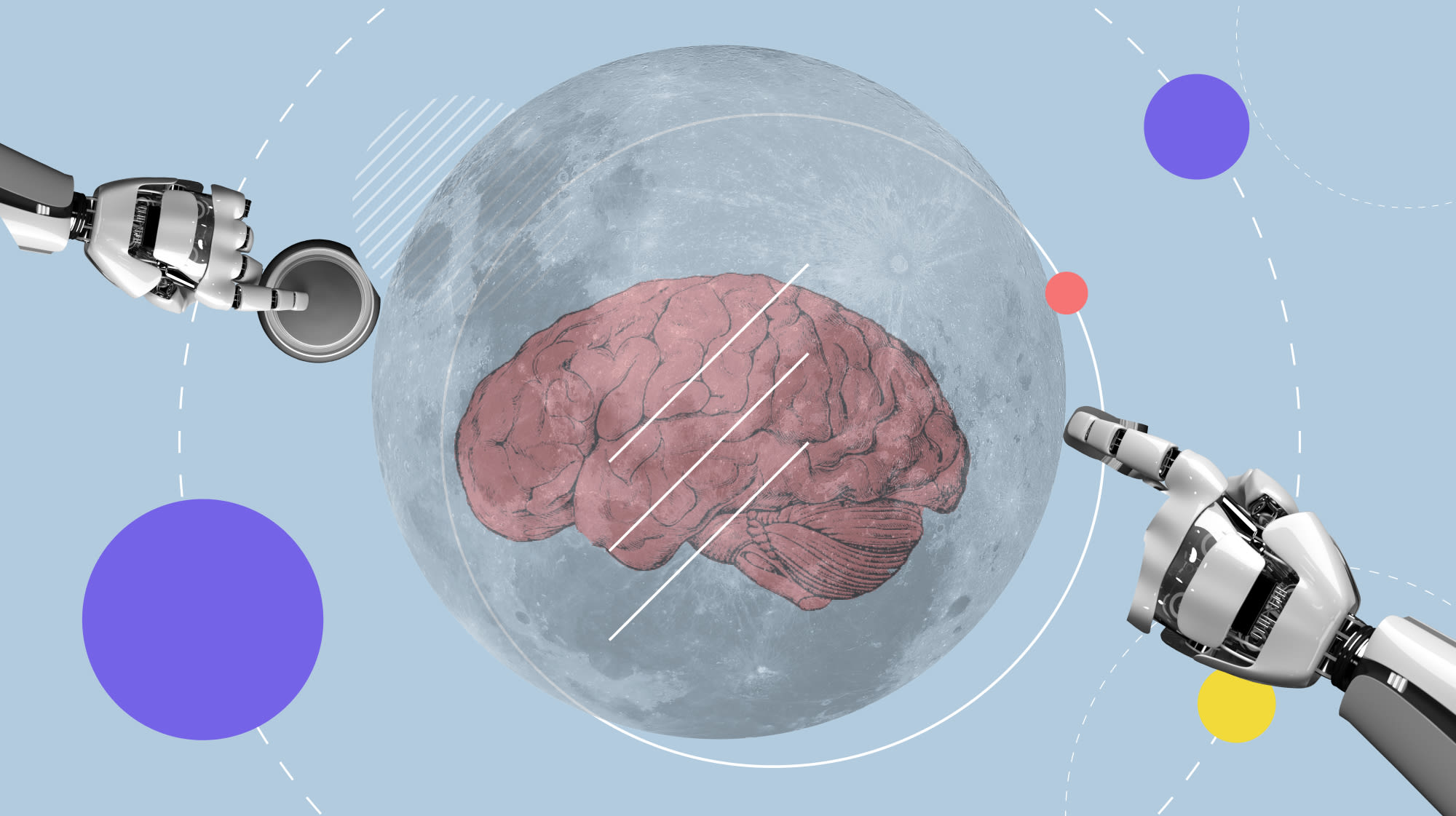AI Monetization Explored: Romuald Członkowski on Turning AI into Revenue
A PricewaterhouseCoopers (PwC) survey found 72% of business leaders see AI as a “business advantage,” yet a survey by MIT Sloan Management Review and The Boston Consulting Group revealed only 20% believe their organizations have a clear AI vision. Together with my guest Romuald Członkowski, an AI Business Consultant from Boldare, we discuss the practical aspects of implementation and monetization of AI across various industries. Let’s delve into the hottest question of the last few months: how to monetize AI?

Table of contents
Iza: Is it actually possible, and how can one make money on AI? In marketing, we feel like we’re replacing the work of many people with AI tools: content writing, image creation, etc. I’ve even seen entire ebooks, ready-made SEO articles, and online courses generated in seconds. However, it seems more like savings rather than earning.
Romek: It’s a bit like a philosophical question, right? Time is money. So, you earn money either by saving it and then not spending it, or by generating new opportunities and directly monetizing those opportunities.
There is a distinction, but in the end, both are ways of earning money. The example you’ve given is very interesting because the marketing sector has quickly adopted artificial intelligence tools. I think it’s already happening on a large scale in various companies. For example, many small businesses are already saving thousands of dollars that they would otherwise spend on social media marketing agencies. They are using available tools to generate content for social media or create images for their products and posts. This saves money that would otherwise be spent on external service providers, directly impacting their bottom line.
Another aspect is seizing new opportunities that would not be possible without AI. Generating content that is personalized for a specific user, created on the fly, and responding to what the potential buyer is looking for, or using it in marketing to reach out through chatbots to provide exactly what the user wants, not just generic information.
Talking about the direct monetization of this technology, consider digital art, for example. People are creating highly creative graphics and paintings and selling them online—a feat that would not have been possible before without a skilled graphic designer or painter. However, it’s important to remember that there must be a human touch. The Internet is currently being flooded by low-quality AI-generated content. So, if you and your company want to stand out and be authentic, you really need to have a human in the loop to at least check for errors, fact-check, and perhaps add a bit more of your brand’s style to this content.
AI can bring you substantial cost savings or it can enhance the user experience.
Iza: We’ve touched on the marketing side of it so far. But is it possible to use, implement, and actually monetize AI in any industry at this moment? Because I’m sure there are some industries you can think of where AI doesn’t seem applicable. Can you give us some examples of industries that are not so obvious?
Romek: Of course. There are some industries and areas that will be disrupted later because they need time to evolve. Still, I think AI has the potential to disrupt nearly all industries. We initially believed that robots would first replace low-paying blue-collar jobs before moving to white-collar positions, with our advanced knowledge acting as a shield against AI and automation. Ironically, it’s the opposite right now.
So there are industries that are more resilient to AI, for example, construction. You need people to build buildings, but at some point, there will be more robots on the construction site as well. If your business involves human interaction or requires specific knowledge, there is potential to use AI to either save costs or enhance the user experience. I know it sounds very general when I say that. If our readers want to dive into more detailed information, they can download our AI matrix that presents the possibilities of using AI in some explanatory industries. We created it to inspire decision-makers and share some of the ideas we had internally. Let me give you a few examples from it.
Let’s look at professional services first. If you are a company that provides advice of any sort to other companies, such as consulting, you can deploy a business advice chatbot to share the knowledge with potential customers. Such a bot can be trained on knowledge that the company already has in any digital form. Users could interact with it through typical online chat but also through a voice call. It’s important to remember that to use a ChatGPT solution for your company, you first need to “feed” it with the knowledge you want to use, knowledge about your domain, product, services, etc.
In the healthcare industry, we can relatively easily deploy a multilingual voice assistant that would assist in setting up doctors’ appointments. Your patient would call a doctor and then automatically schedule the next visit. It would be connected with your CRM. You can save costs on the front desk, improve the whole process, serve more inquiries, or save on no-shows. If the chatbot is calling every patient a day before a visit, just to confirm, you can reclaim those no-shows again if there is no confirmation.
The third example I’d like to introduce here is from education. Let’s imagine you have a language school of any size. You could provide an AI native speaker practice grounded in the current lesson of the student, i.e., if you are covering the present perfect right now, the AI native speaker can converse in a way that puts special emphasis on learning this part of grammar. It can be any school, whether a specialized language school or an online tutoring service.
Last but not least is an example from e-commerce. If you have thousands of products in your shop, you could be assisted by an AI assistant that can automatically generate product descriptions. These descriptions will be crafted in the style and tone of voice of your e-commerce store. They can be customized. This allows you to save thousands of hours writing those descriptions or thousands of dollars in commissions to an outside agency or a freelancer. We actually implemented such a solution for one of our clients.
Summing up, this is only to show you the potential of AI. Possible applications in every business are very broad. The first thing you need to do is to review all your business areas and spot the opportunities. Some will be quite obvious, others not so much. The best thing is that it’s accessible to companies of all sizes these days thanks to low API costs. We can use some already existing solutions from OpenAI, Microsoft, Google, and other emerging products. As a digital products agency, we either customize these solutions, build our own, or use existing solutions to save our clients’ budgets.
It depends on the use case, but we can create a working prototype within a few days. I believe it’s worth trying to not fall behind because the competition is already exploring this.
Iza: That sounds like a never-ending list of possible use cases. My last question would be how to start if I am in an industry that is not so obvious and I really haven’t got a clue how I could use and monetize AI in my business. Of course, I know that I should be doing it, otherwise, I will be left behind, as you said. What would be your advice for those people?
Romek: I think there are two ways. One way is if you have a developer in your company, you can invest his time and ask him to explore our materials. Some time ago we released an open-source library to create an open AI assistant within minutes. You can use that; the developer can create an assistant for you, and try out what works and what doesn’t in your case.
We are doing it for free because we believe there is so much potential in this technology that we want to give back to the community, something to make developers’ lives easier and for business owners and decision-makers to have a prototype to think about and experiment with.
The other way is to reach out to us and talk. First, download the e-book with our AI matrix, look through that. It will give you some food for thought. Then you can schedule a non-obligatory consultation with us.
I personally love just investigating an idea and checking if it’s feasible or not, developing, or if it will be costly or not costly for a customer in a specific business environment. Please reach out and let’s talk for half an hour.
Iza: Thank you, Romek, for this.
Share this article:








